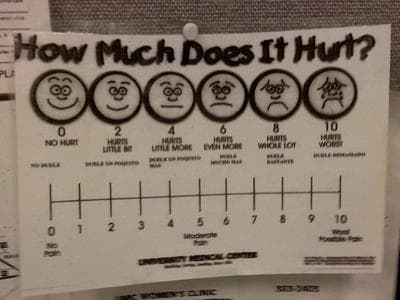Advertisement
Why Are More Women Overdosing On Painkillers?
Guest Contributor
Overdose deaths linked to prescription pain relievers have increased dramatically among women in recent years, the Centers for Disease Control and Prevention announced yesterday.
And nobody really knows why.
Part of the increase may be due simply to a higher prevalence of chronic pain conditions in women, the CDC said, adding that “some of the most common forms of pain are more prevalent among women,” including abdominal pain, migraine and musculoskeletal pain.
Indeed, one of the more puzzling findings from the latest CDC figures is that the opioid-related overdose death rate was not highest among younger women, but among women aged 45 to 54.
 Dr. Nora Volkow, director of the National Institute on Drug Abuse, suggested in an interview with The New York Times that this may in part reflect the fact that older women are appropriately prescribed pain relievers because they have more chronic pain. If death rates were driven purely by abuse, she said, then one would expect the death rates to be highest among younger women who are more likely to be abusers.
Dr. Nora Volkow, director of the National Institute on Drug Abuse, suggested in an interview with The New York Times that this may in part reflect the fact that older women are appropriately prescribed pain relievers because they have more chronic pain. If death rates were driven purely by abuse, she said, then one would expect the death rates to be highest among younger women who are more likely to be abusers.In addition, women on average weigh less than men – a fact that doctors may not sufficiently take into account – and therefore, at the same dose, may suffer more adverse effects.
To be sure, men are still more likely to die of an opioid-related overdose than women. But according to the CDC figures, overdose deaths linked to prescription pain relievers increased in women by about 400 percent between 1999 and 2010, compared to 265 percent in men. In 2010, 6,600 women died in overdoses linked to prescription pain relievers – four times as many as died from cocaine and heroin combined.
It’s important to remember, however, that while opioids such as OxyContin, Vicodin and Percocet are often singled out and vilified, only 30 percent of the opioid-related deaths in 2010 – 16,651 among men and women together – involved opioids taken alone. Often, people take opioids along with other drugs such as benzodiazepines and alcohol, a problem that physicians should be more aware of, said Christopher Jones, a health scientist at CDC in a press teleconference Tuesday.
It’s also important to remember that, while more than 16,000 people died of opioid-related deaths in 2010, NSAIDS – nonsteroidal anti-inflammatory drugs such as ibuprofen – can also be deadly, killing an estimated 7,000 to 10,000 American adults a year.
In the briefing for reporters, Dr. Thomas Frieden, director of the CDC, said, “These [opioids] are dangerous medicines and they should be reserved for situations like severe cancer pain where they can provide extremely important and essential palliation. In many other situations, the risks far outweigh the benefits.” Prescribing opioid medications, he added, “may be condemning a patient to lifelong addiction and life threatening complications.”
But that may be an overly draconian view of addiction risks. A 2008 review of 67 other studies of opioids in thousands of people with chronic pain put the risk of abuse or addiction at 3.27 percent, and for people with no personal or family history of drug or alcohol problems, the figure was even lower.
Indeed, the controversy over prescription pain relievers has become highly politicized recently, pitting anti-opioid activists who want to severely limit doses that doctors can prescribe against pain patients who fear their access to opioids may be curtailed.
CDC officials also touted the potential benefits of prescription monitoring programs, often called PMPs, as a way of curbing abuse of prescription pain relievers. These programs track prescribing and dispensing of the drugs in an attempt to stop patients from “doctor shopping.” CDC officials did not respond to a reporter’s comment questioning the value of such monitoring programs. A study done by CDC itself in 2011 failed to show that PMPs reduced opioid-related overdoses or deaths, although a different study by other researchers in 2010 was more favorable.
CDC officials also declined to respond in detail to a reporter’s question about aggressive marketing by pharmaceutical companies as a potential contributor to the increase in opioid pain reliever overdoses, although Frieden did note that there has been a legal settlement in which one company was compelled to make a large payment because of misleading or inaccurate marketing to physicians.
That was an apparent reference to a 2007 case involving three executives of Purdue Pharma who pleaded guilty in a US federal court to misleading regulators and the public about the addiction potential of OxyContin, agreeing to pay $634 million in civil and criminal fines.
Judy Foreman, a longtime syndicated health columnist, is the author of the forthcoming book “A Nation in Pain – Healing Our Biggest Health Problem,” from Oxford University Press.
This program aired on July 3, 2013. The audio for this program is not available.